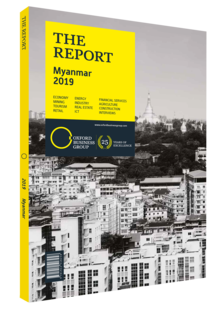U Win Khaing, Minister of Electricity and Energy: Interview

U Win Khaing: Interview
How is the government planning to reform subsidies to make energy supply more economically feasible?
U WIN KHAING: Tariff review and reform is a priority. The Ministry of Electricity and Energy (MoEE) is fully aware of the causes and consequences of the deterioration of its financial position. For example, the cost of generation has increased significantly because new power plants have come on-line, with a higher cost of supply than the older dams. Demand has also grown considerably faster than expected, which has led the MoEE to turn to rental plants. Moreover, revenue is much lower than the cost of supply.
The MoEE is also aware of the indirect costs linked to subsidies. They are an impediment to attracting new investment in the power sector, weighing on the state’s resources and reducing the MoEE’s ability to invest in the future. The ministry is currently exploring a range of strategies to improve current conditions, including tariff reform, restructuring the block system, more effective use of data to maximise revenue by reducing costs and improving efficiency, and customer surveys.
What progress has been made on the infrastructure and safety standards needed to make the liquefied petroleum gas (LPG) strategy viable?
WIN KHAING: The MoEE plans to distribute LPG to 1m households by 2020. As part of efforts to improve safety standards and educate the public about LPG, we have organised knowledge-sharing discussions and demonstrations, and published pamphlets concerning LPG handling and safety. In addition, we have implemented a plan to reduce power usage when cooking.
Private companies have been allowed to participate in LPG business activities since 2010 because LPG production from domestic plants was not meeting demand. State-owned Myanma Petrochemical Enterprise (MPE) currently issues seven types of LPG business licences to ensure that LPG business activities are conducted in a systematic and safe manner. The total storage capacity at the LPG plants and refineries under the MPE is 11,000 tonnes, while the total storage capacity of private companies is 3780 tonnes. We are also formulating LPG rules and regulations to specify safety standards for the entire LPG supply chain. One function of these will be to ensure the ongoing provision ofLPG handling and safety training courses for both government and private staff at the No 1 Refinery, located in Thanlyin.
Of the 18 onshore and 13 offshore blocks that have yet to be explored, how many does the MoEE plan to tender over the course of FY 2018/19?
WIN KHAING: All available blocks – that is to say, exploited and unexploited onshore and offshore blocks – will be tendered in upcoming international bidding rounds. We are reconsidering the terms and conditions of existing production-sharing contracts to bring them in line with current rules and regulations for investment. The potential reserves of these untouched blocks have not yet been estimated.
What is the ministry’s plan to enhance recovery at the country’s existing offshore gas fields?
WIN KHAING: The natural depletion of gas production in older offshore gas fields is the biggest challenge that the MoEE faces. Myanma Oil and Gas Enterprise and the operators of the existing offshore gas fields – Yadana, Shwe and Zawtika – are taking action to extend the current plateau period and make additional discoveries.
They are conducting further 3D and 4D seismic surveys; preserving and implementing infill wells in existing prospects; and undertaking additional drilling of exploration and appraisal wells. A recent discovery in offshore block A-6 is especially promising, since this may provide gas for the power plants in the Yangon Region and help to counteract the declining output of existing fields. It will also support the MoEE’s efforts to increase domestic natural gas production and gradually reduce dependence on imported liquefied natural gas.
You have reached the limit of premium articles you can view for free.
Choose from the options below to purchase print or digital editions of our Reports. You can also purchase a website subscription giving you unlimited access to all of our Reports online for 12 months.
If you have already purchased this Report or have a website subscription, please login to continue.

